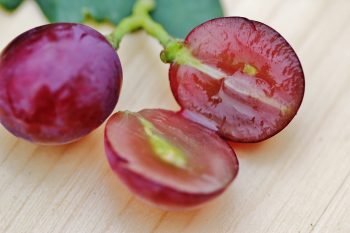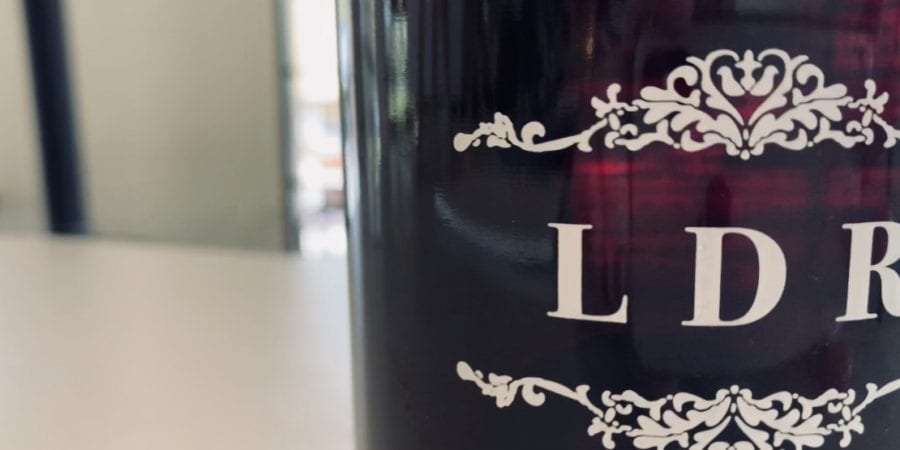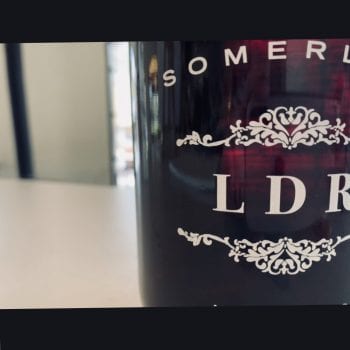Are you a tannin fan?
Or do you prefer to avoid wines with high tannins?
Some of us do need to avoid them and there are two quite valid reasons for doing so…
You’re a Supertaster
Well, in our opinion, you’re all supertasters! But around 25% of you may deserve this title because you have a heightened sensitivity to bitterness. Not all tannin is bitter, but the tannin found in the stems and seeds of grapes usually is.
Supertasters are defined as having a high number of taste buds on the front part of their tongues. Everything tastes intense: from salty, sweet, sour, the sensation of fat and bitter. The classic way to tell though is if you hate bitter vegetables such as brussels sprouts or kale. Although the name is pretty fantastic, being a ‘supertaster’ may actually mean you’re less likely to enjoy bitter drinks such as bitter beers and high tannin full-bodied red wines. It also means that you tend to eat bland foods over super rich foods that taste too ‘oily’. You may also be a picky eater.
You Have Tannin Sensitivity
Some people believe they have tannin sensitivity.
While there is very little research available on this topic, one study does suggest that ingested tannin may affect energy metabolization, growth rates, and protein digestibility in lab animals.
So, if your body is inefficient at digesting nutrients and you are highly sensitive to tea, coffee, red wine, cinnamon, and chocolate, this might be you.
What are tannins?
 Tannins are naturally occurring compounds found in plants.
Tannins are naturally occurring compounds found in plants.
Plants have tannins to make themselves unpalatable. Their purpose in nature is to deter animals from eating a plant’s fruit or seeds before it’s ripe.
The scientific word for these compounds is polyphenols. In wine grapes, polyphenols release from the skins, seeds and stems when they soak in the grape juice after crushing. They are what give certain wines their characteristic dryness or astringency.
You experience the effect of tannins any time you drink a wine that creates a drying sensation in your mouth. Depending on how dry your mouth feels, you can determine whether a wine is high or low in tannins. We say a wine that is high in tannins is tannic.
Polyphenols have remarkable antioxidant properties and antimicrobial properties. This is why red wines age so much better than most whites.
There is evidence to suggest that tannins have anti-carcinogenic properties as well.
Loving our blog? Sign up for weekly updates straight to your inbox…
All of that is great, but if you’re one of those people who need to avoid tannins, but still enjoy a glass of wine what should you drink??
Well, white wine and rosé are obviously a great place to start.
As I’ve already mentioned tannin is extracted from the skins, seeds, and stems of a grape – these (for the most part) only come in contact in red wine fermentations.
But what to do if you still like the idea of a red wine. Especially consumed by the fire on a chilly Adelaide Hills night?
Here is a list of…
Low Tannin Red Wines To Try
First one from the Somerled stable of wines…
 Pinot Noir
Pinot Noir
If you’re looking for a red wine with low tannins, look no further than our LDR (Light Dry Red). Not only does Pinot Noir have less bitterness than some later ripening varieties, but this particular wine also has less tannin by design. It is completely unoaked, so no additional tannins are added through this process.
Read more about this fabulous wine and how it came about here.
Now, onto some others (which may not be quite as easy to find!)…
Barbera
This lovely grape is primarily grown in Northern Italy and offers beautiful sour cherry, licorice, and brambly fruit tasting notes. People who are sensitive to bitterness might not like the Italian versions as much as the American and Australian ones.
Bobal
A fruit-forward option with low bitterness. Bobal grows in Central Spain. It’s full of bombastic blueberry and raspberry notes.
Bonarda
This is specifically referencing Bonarda from Argentina (not Italian Bonarda), with bold, black cherry fruit, medium-low tannins (through winemaking), and a hint of bitterness.
Malbec
Malbec actually has moderate tannins, but due to its fruit-forward nature, it doesn’t taste particularly bitter or tannic. It’s a good choice for those wishing to avoid bitterness.
Cabernet Franc
If you like Cabernet, this would be the least tannic of the Cabernets, but not without some bitter tannic essence! The Cabernet Franc from the United States, Italy, and Argentina has lovely red berry flavors and usually less bitterness than French Cabernet Franc.
Carignan
This is a very fruity, punchy red, with dried cranberry, red raspberry, cinnamon, and subtle meaty notes. You’ll find it mostly in the south of France in Languedoc-Roussillon, where it’s a popular blending partner with Grenache.
Ciliegiolo
A rare red Italian grape that is actually the parent of Sangiovese, it has beautiful dried cherry-like flavors and distinct dustiness. You’ll find it is mostly grown in the Liguria, Tuscany, and Umbria.
Cinsault
A pretty floral red, with raspberry, sour cherry, and violet notes and just a little bitterness, it’s difficult to find as a single varietal wine as is often blended with Grenache, Syrah and Mourvèdre.
Valpolicella
A region in Veneto that grows primarily Corvina grapes, these sines have sour cherry, cinnamon, and chocolate notes. There is a subtle carob or green almond-like bitterness to this wine, so spring for a Ripasso if you want a more fruit-forward style.
Frappato
A delightful fruit-forward, light-bodied red wine from Sicily that has explosive aromas of candied cherries, dried strawberry, and clove. Usually Frappato has low bitterness.
Gamay
A very low tannin red with tart red and blueberry fruit flavors, but also with a distinct bitter note (almost like peony or dandelion) on the finish.
Grenache/Garnacha
This is a beautiful fruit-forward raspberry fruit wine, with subtle notes of candied orange rind. Seek out Spanish Garnacha or Grenache-based blends from Roussillon in France.
Lambrusco
A group of varieties from Emilia-Romagna in Italy, these make fruity, sparkling red wines. Generally speaking, Lambrusco Grasparossa has the most tannins and Lambrusco di Sorbara has the least.
Merlot
Definitely not a low tannin red, but often made in a low tannin style (through winemaking), this wine usually displays very low bitterness.
Schiava
Found in Northern Italy and Germany (as Trollinger), this wine is a fruity delight with a lot of similarities to Pinot Noir, but with more of a candied, perfumed nose (think cotton candy).
Tips on Finding Low Tannin Wines
Since tannin is considered a positive trait in wine, making the finished product age-worthy, you’ll find that more expensive wines tend to have higher tannins. Of course, quality improves greatly with age as well, so tannins will usually be much less bitter in older wines.
Red wines that have “whole cluster fermentation” will have higher tannins because the stems are in contact with the wine. It’s a common practice on lighter red wines (such as Pinot Noir and Grenache/Garnacha), to help create a more age-worthy wine.
Oak barrels are essentially straight tannin and will add a great deal of tannin to wine. Although, this type of tannin will be substantially “sweeter.” Look for wines not aged in oak, aged in “used” or “seasoned” oak, or for less aging time in oak for less overall tannin.
Generally speaking, more affordable wines tend to have lower tannin. There are several potential reasons for this. However, one of the biggest reasons is increased grape production in the vineyard reduces the polyphenol content in individual grapes.

 Pinot Noir
Pinot Noir
I hate Brussel Sprouts.
Froggy.
Me too Froggy! I was thinking as I wrote this… “doesn’t more than 25% hate Brussels Sprouts?!”